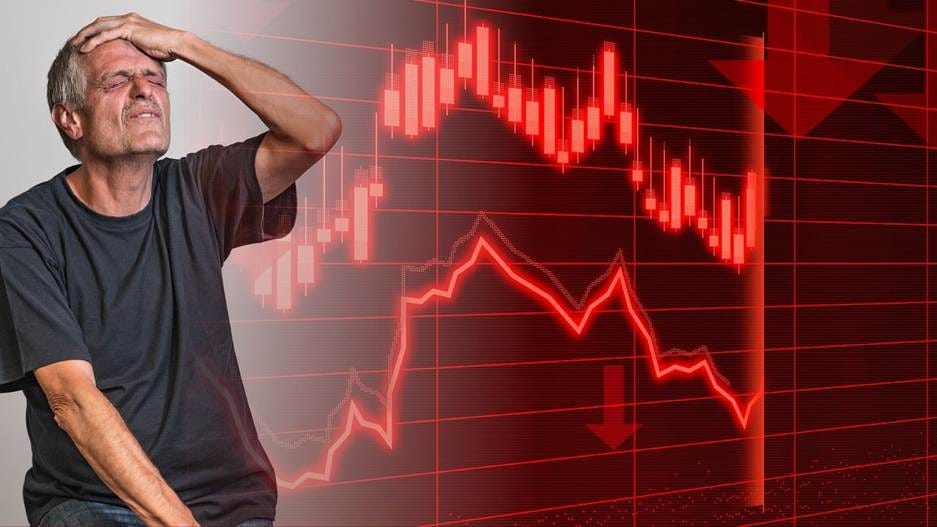Related Articles: Liberation Day Tariffs Part 1, Liberation Day Tariffs Part 2, and China and US Chip Bans.
Aerial view of cargo containers (photo credit: StockSnap via Pixaby)
A tremor rolled through the world’s trade routes in early July 2025. And no, it didn’t come from a natural disaster or a regional conflict. It came from a series of signed letters, posted on Truth Social by Donald Trump.
On July 7, the U.S. president announced sweeping tariffs on imports from key allies across Asia, ranging from 25% on Japanese and South Korean goods to a staggering 40% on products from Cambodia and Laos. The tariffs, set to take effect on August 1 barring last-minute deals, sent markets into a brief tailspin and diplomats scrambling for clarity. Along with the tariffs announcement, trump warned South Korea and Japan, “If for any reason you decide to raise your Tariffs, then, whatever the number you choose to raise them by, will be added onto the 25% that we charge.”
At almost the same moment, U.S. Secretary of State Marco Rubio boarded a plane to Kuala Lumpur for the ASEAN Regional Forum (billed July 8-12), marking his first visit to the Indo-Pacific as America’s top diplomat. He arrived at the ASEAN Regional Forum to try to cool down the tension Trump’s policy ignited.
The move marked an unmistakable moment: while one branch of U.S. leadership slammed the economic brakes, the other tries to hit the diplomatic gas.
Tariffs Strike with Unprecedented Reach
Trump’s tariff letters, which targeted 14 countries, are the most sweeping U.S. trade action since his first presidency. The list includes close allies like Japan and South Korea, as well as trade-reliant economies like Malaysia, Indonesia, Cambodia, and Thailand. Even Bangladesh was hit with a 35% duty specifically aimed at its textile sector, one of the main drivers of its GDP.
"This is absolutely shocking news for us," said Mahmud Hasan Khan, president of Bangladesh Garment Manufacturers and Exporters Association, to Reuters.
For some nations, the blow was heavier than others. Laos and Myanmar were handed a punishing 40% tariff rate. Cambodia and Thailand—two countries that have attracted foreign investors for their low-cost manufacturing bases—were hit with 36%. The rationale? Trump’s camp claims these countries have unfair trading advantages and that the U.S. must "equalize the playing field."
Analysts were quick to note that this round of tariffs targets smaller Asian economies disproportionately, hitting key sectors like garments, footwear, and electronics. Countries like Cambodia and Bangladesh face the highest exposure, as their economic lifelines depend on U.S. market access.
Global Markets Flinch, Then Stabilize
In the immediate aftermath of Trump’s tariff announcement, global stock markets reacted sharply. The S&P 500 dropped 0.8%, the Dow slid nearly 0.9%, and the Nasdaq dropped similarly—marking one of the sharpest pullbacks since mid-June. The losses were widespread. Decliners outnumbered gainers by nearly 4-to-1 on the New York Stock Exchange.
However, by the next trading day, markets began to stabilize. Investors were cautiously optimistic that the tariffs—delayed until August 1—might be used as a negotiating tactic rather than an immediate punishment. This wait-and-see stance brought a degree of calm to global equities, even as bond yields rose and the U.S. dollar strengthened against the yen. According to a senior market analyst, "While a comprehensive trade deal is unlikely before the deadline, there is cautious optimism that a preliminary agreement can be reached to avert the immediate imposition of higher tariffs."
The muted long-term market reaction suggests that investors are not fully convinced the tariffs will stick. But that perception could change quickly, especially if more countries are targeted or if the tariffs go into full effect without exemptions.
Diplomatic Countermoves Across Asia
Japan’s Prime Minister Shigeru Ishiba with President Trump at the White House in February (photo credit: The White House via Flickr)
Behind the scenes, governments from Tokyo to Seoul were already mobilizing. Japan's Prime Minister Shigeru Ishiba described the tariffs as "deeply regrettable," and his administration has begun urgent backchannel communications with U.S. trade representatives.
South Korea, still undergoing a transition after recent elections, also expressed concerns while welcoming the brief delay before implementation. Officials in Seoul noted that their government would work “tirelessly” to avoid tariffs on auto and tech exports, two major pillars of the country's economy.
Thailand offered greater access for U.S. agricultural products, and Malaysia and Indonesia opened lines for trade talks—hoping diplomacy can avert the economic storm.
Meanwhile, European leaders condemned Trump’s tariffs and began discussing potential countermeasures. German Finance Minister Lars Klingbeil warned that the EU was prepared to retaliate if necessary. "If we don't reach a fair trade deal with the U.S., the EU is ready to take counter measures," he said.
And yet, amid all the tension, one bright spot emerged: Vietnam. In a move that surprised many, Washington struck a last-minute deal with Hanoi on July 2nd that reduced Vietnam’s tariff burden from 46% to 20%—in exchange for stricter 40% tariff on transshipped goods. However, the deal, while being hailed by U.S. trade strategists as a potential blueprint for similar concessions from other nations, has struck analysts as a move targeted squarely at transshipments from China.
Washington's focus on transshipment enforcement puts pressure on other Asian economies, which may find themselves forced to choose sides.
Enter Marco Rubio: A Calming Presence?
As the tariff storm gathered, Secretary of State Marco Rubio touched down in Kuala Lumpur for the ASEAN meetings on July 8. His agenda was clear: reassure U.S. allies that despite the trade shocks, Washington remains committed to stability and partnership in the Indo-Pacific.
Rubio, a prominent foreign policy voice and 2024 vice-presidential hopeful, is using this visit to project a more nuanced U.S. strategy. While Trump wields tariffs like a hammer, Rubio is extending an open hand.
In meetings with foreign ministers from Japan, India, Australia, and several ASEAN nations, Rubio emphasized mutual interests: critical mineral supply chains, regional infrastructure, and maritime security. He also privately encouraged allies to view the tariffs as negotiable, not permanent—a stark contrast to Trump’s hardline messaging.
A senior State official said Rubio plans to “reaffirm our commitment to East Asia, to ASEAN, to the Indo‑Pacific,” stressing mutual economic and security interests. The visit was also seen as a counterbalance to China’s efforts to deepen economic influence in the region.
ASEAN’s Dilemma
For many Southeast Asian economies, the U.S. tariffs present a lose-lose proposition. Nations like Thailand, Cambodia, and Malaysia are now forced to choose between preserving their export relationships with the U.S. and continuing deeper integration with China, their top trading partner.
Vietnam’s recent deal suggests a path forward: compromise on shipping practices in exchange for lighter duties. But not all countries have the leverage—or the strategic alignment—to do the same. Myanmar, for instance, remains politically isolated, while Laos lacks the trade volume to force a renegotiation.
India, notably absent from the tariff list, might use the moment to position itself as an alternative trade partner. Analysts believe New Delhi could benefit from diverted supply chains and increased foreign investment, particularly in pharmaceuticals and semiconductors. Trump has long promised a trade deal with India, but talks have stalled on disagreements over U.S. tariffs on auto components, steel and agricultural goods.
Meanwhile, countries like the Philippines and Singapore—also spared—may become indirect beneficiaries, as companies reroute production to avoid tariff-affected regions.
Global Economy on Edge
Photo credit: Tumisu via Pixaby
With the global economy already wobbling due to inflationary pressures and post-pandemic supply chain realignments, Trump’s tariff plan could serve as the tipping point for a deeper slowdown.
Economists at J.P. Morgan warn that a full-blown trade war could push the global economy into a mild recession by late 2025. In March, they increased their global recession probability to 40%, primarily due to the new U.S. tariffs, and forecasted U.S. and global GDP could contract by up to 1% and around 0.5% respectively, through 2026.
Nomura Research has also flagged a significant slowdown in foreign direct investment in Asia, as companies hit pause on expansion plans until the tariff landscape becomes clearer.
Committee for a Responsible Federal Budget, which has projected that reciprocal tariffs may generate $150–$200 billion in additional U.S. revenues through the remainder of calendar year 2025.
Meanwhile, global institutions such as the WTO and IMF have expressed concern over what they describe as “unilateral economic aggression.” Neither body has the power to enforce changes, but both have warned that tit-for-tat measures could unravel decades of trade liberalization.
The August Deadline
All eyes now turn to August 1. The U.S. administration has said the tariffs will kick in unless “acceptable concessions” are reached. For some countries, that means cutting transshipment channels. For others, it may require renegotiating bilateral agreements from scratch.
There’s a chance more deals like Vietnam’s could emerge in the coming days. But it’s also possible that Trump could follow through with little warning, especially if talks stall or are perceived as insincere.
The uncertainty is already prompting multinational firms to reconsider their supply chain strategies. Some are accelerating reshoring efforts or investing in automation to avoid trade risk altogether.
Meanwhile, Asian countries like Japan, Korea, and India are actively negotiating, but time—and political goodwill—are running low. Rubio’s visit may prove decisive in bridging economic pressure with diplomatic partnership. If he secures broader commitment on trade and strategic cooperation, the tariffs may be seen as leverage—not punishment. But if negotiations fail, it could produce lasting fractures in U.S.–Asia relations.
Conclusion
“Tradequake” is no exaggeration. The tremors from Trump’s tariff declarations are shaking the foundations of global commerce. His aggressive tariffs illustrate an “America First” tactic grinding against globalization. Countries are scrambling to protect their economies, businesses are rethinking risk, and markets are oscillating between fear and confusion.
At the same time, Marco Rubio’s diplomatic mission to the Indo-Pacific highlights a different U.S. face—one that values cooperation and mutual benefit. Whether this softer tone can counterbalance Trump’s economic aggression remains uncertain.
The coming weeks will be critical. Will more countries ink last-minute deals? Will Trump intensify pressure? And can Rubio’s outreach truly stabilize an increasingly fractured trade landscape?
What is certain: this is a flashpoint that could redefine trade, security, and alliances across Asia—for years to come.
Note: This is my own opinion and not the opinion of my employer or any other organization. This is not a solicitation to buy or sell any stock. My team and I use a Large Language Model (LLM) aided workflow. This allows us to test 5-10 ideas and curate the best 2-4 a week for you to read. Rest easy that we fact-check, edit, and reorganize the writing so that the output is more engaging, more reliable, and more informative than vanilla LLM output. We are always looking for feedback to improve this process.
Additionally, if you would like updates more frequently, follow us on x: https://x.com/cameronfen1. In addition, feel free to send me corrections, new ideas for articles, or anything else you think I would like: cameronfen at gmail dot com.








